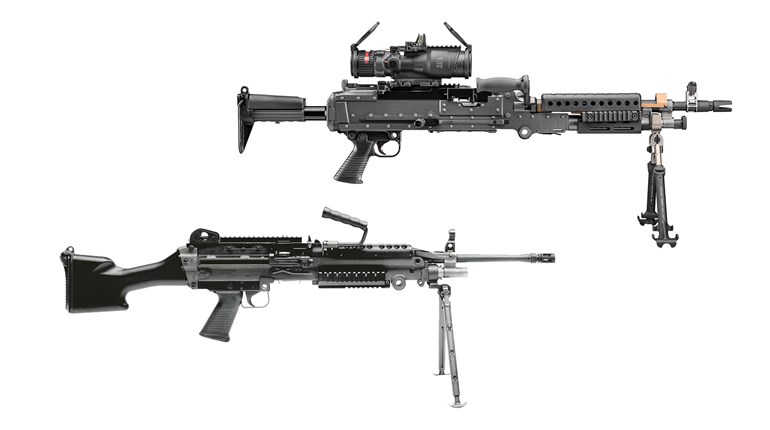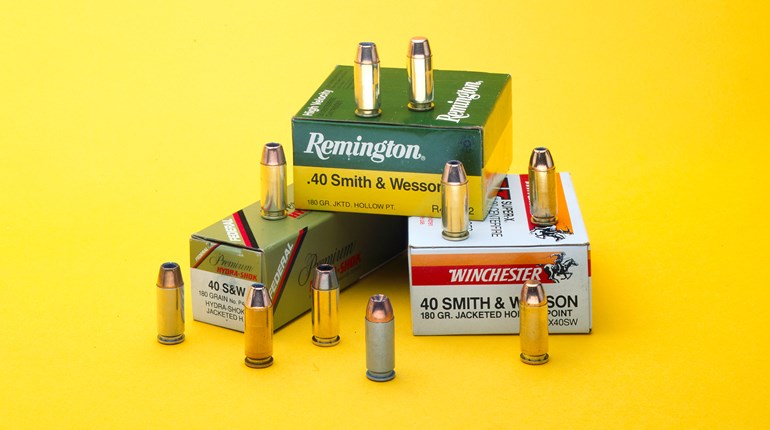
Beginning with the Browning Automatic Rifle (BAR), the squad automatic weapon is a vital platform that continues to evolve as it serves militaries worldwide.
The infantry Soldier’s lot is seldom a happy one. But, it is often full of quiet satisfaction at a hard job well done. Those who command the foot Soldier understand there must be a sensible organization and reliable tools with which to work. In the early 20th century, the organization of the infantry shifted heavily to use of the squad. The squad is a group from nine to as many as 14 men. A junior NCO—corporal or sergeant—commands the infantry squad. There are generally three of them in a platoon, which is commanded by a lieutenant. Since most of our data comes from experience with American infantry, that is what I have described. And while other armies might do things a little differently, there are some parallels in the types of armament employed.
In the early part of that century, the machine gun was all the rage. Various makes and models evolved almost simultaneously from heavy, crew-served guns that initially were used almost as artillery, to lighter guns a single man could carry. A full-automatic gun of that size and weight would have a powerful appeal if included in the infantry squad. In the World War I era and the following decade, virtually every army in the world was set up like this.
As if by mutual agreement, the guns used had similar features. For one thing, they almost always fired the same ammunition as that nation’s service rifle. Further, that ammo was fed into firing position from a sheet-metal box magazine. There were a few models that fed from metal strips. Some models had a semi-automatic trigger system, but all had a full-auto mode. All weighed about 20 pounds empty, while the heaviest ran to 25 pounds. Part of that weight came from a bipod, and all were meant to be fired from a buttstock in the prone position. Tactics involved in deploying the squad auto varied, but everyone prized the stable, full-auto accuracy—enough to give the gunner an ammo bearer. Over time, the squad auto became a specialized form of light machine gun.
Tactics involved in deploying the squad auto varied, but everyone prized the stable, full-auto accuracy—enough to give the gunner an ammo bearer. Over time, the squad auto became a specialized form of light machine gun.
The thousands of French and British soldiers who went to war in 1914 used a variety of automatic rifles with mixed results. When American troops entered the conflict in 1917, the French High Command insisted that the Yanks surrender their early Browning Automatic Rifles (BARs) for the notoriously unreliable French Chauchat machine gun. One of the first problems addressed when the French set about modernizing a post-World War I army was its squad auto. This time, that country’s armories came up with a fine product, and one that lasted for decades.
The gun was the Châtellerault Fusil-mitrailleur (FM) Mmlle 24/29, a 25-pound brute chambered for the French 7.5 mm cartridge. This round was developed in the 1920s, but closely resembles the 7.62 NATO, developed in the 1950s. The FM 24/29 had two triggers, one for semi- and one for full-auto mode. A series of bolt and automatic rifles used the same round. That beefy squad auto—the FM 24/29—served French infantry units through World War II, Korea and two protracted colonial wars in French Indo-china and Algeria. It was a heavy, but reliable gun that solidly anchored the French squad for decades. Some authorities have noted resemblances to the BAR.
British infantry went through a similar series of steps to develop a proper squad auto, and in the end, just bought one. The Bren gun was designed and initially manufactured in Brno, Czechoslovakia. British ordnance looked at everything available and chose this venerable warrior, building their versions at the Enfield arsenal, hence the Bren name (Brno, Enfield).Like the French 24/29, the Bren uses magazines loaded into the top of the receiver, which might seem odd to American eyes, but makes shooting prone easier. Bren gunners learned to load their magazines with great care in order to make the rimmed .303 cartridges feed properly.
And then we have the legendary BAR, a gun first used in the last year of the First World War. Compared to the Bren and FM 24/29, the magazine on the bottom reloads quicker—just
tap the magazine catch in the front of the trigger guard and the magazine falls free. The “B” in BAR stands for Browning and yes, that is legendary John Moses Browning. The gun came from the same brain as several other machine guns, as well as a couple different pistols and even some shotguns you might have heard of.
American infantrymen have long since dropped the BAR and replaced it with the M14, a fine rifle that turned out to be a poor squad auto. When the M16/M4 and the 5.56 mm NATO cartridge were adopted, the situation was again confused. Just recently, the military procured yet another squad weapon from SIG Sauer to replace the venerable M249 SAW.
Once again, we’ve got a new batch of fightin’ iron.



































